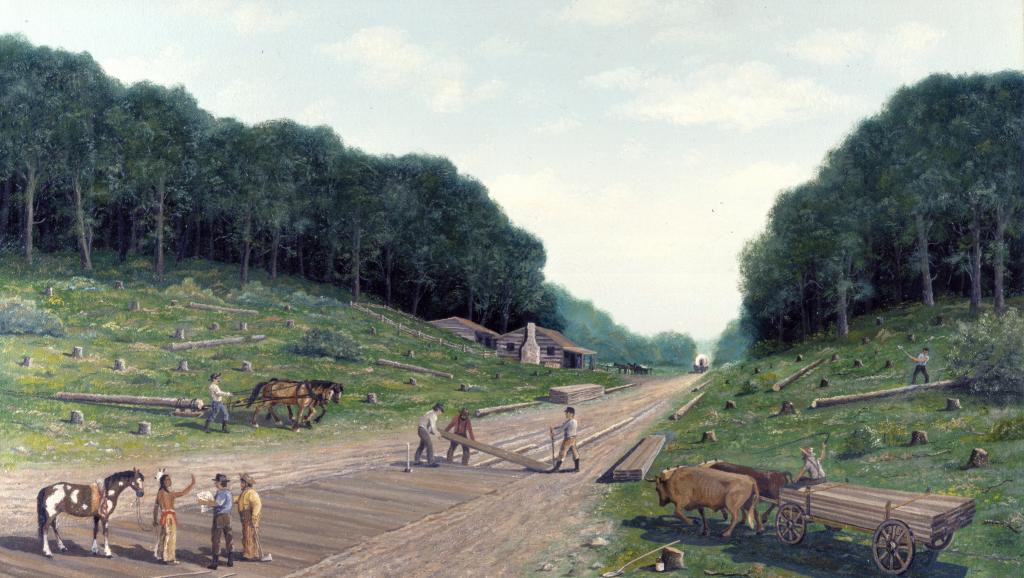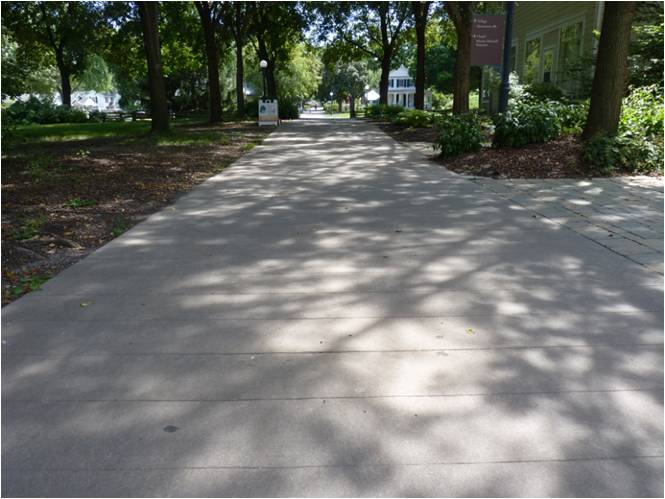
"Building the Plank Road" by Les Shrader, twentieth century

The plank road at Naper Settlement
“Mud bogs prosperity of young city” warned a sign at a mud hole in Chicago, and Illinois businessmen took its message to heart: it’s hard to conduct business when goods cannot be safely and efficiently transported. Muddy roads were not only a problem in Illinois. Many towns were seeking a solution to moving goods and maintaining healthy commerce with eastern cities. A plank road seemed the perfect solution. Timber was abundant throughout the region, and by the middle of the 19th century a network of plank roads spread throughout the country, connecting agricultural towns like Naperville with urban markets. A group of influential Naperville businessmen formed a stock company to finance a plank road that would connect with Chicago. So popular was the use of plank roads that the return to investors ran as high as 40%, paid by the tolls collected on the heavily trafficked road. While rails were being laid for the railroad north of town, wagons continuing passing nose to tailgate east and west along the plank road, which was known as the “farmer’s railroad.” But the plank road’s success was short-lived. As profitable as it was, investors paid little attention to its maintenance. Within a few years, the planks rotted, warped and broke, creating mud holes, and making wagon passage on the plank road even more treacherous than on the dirt road it had replaced.